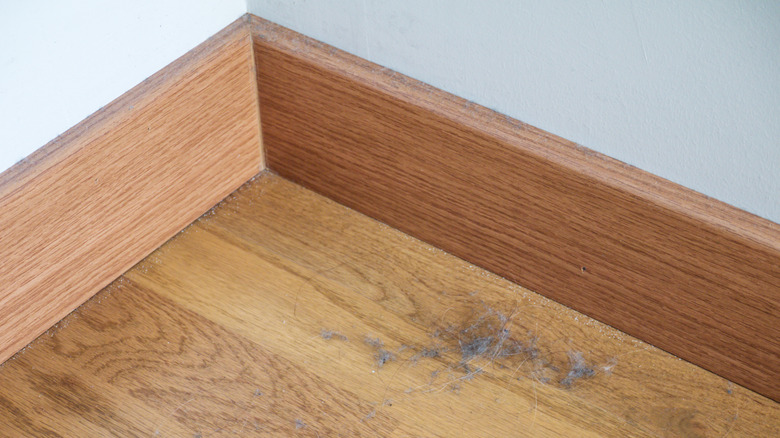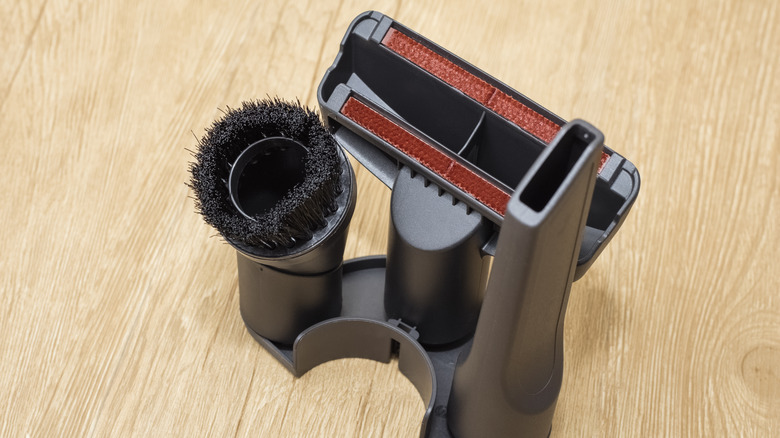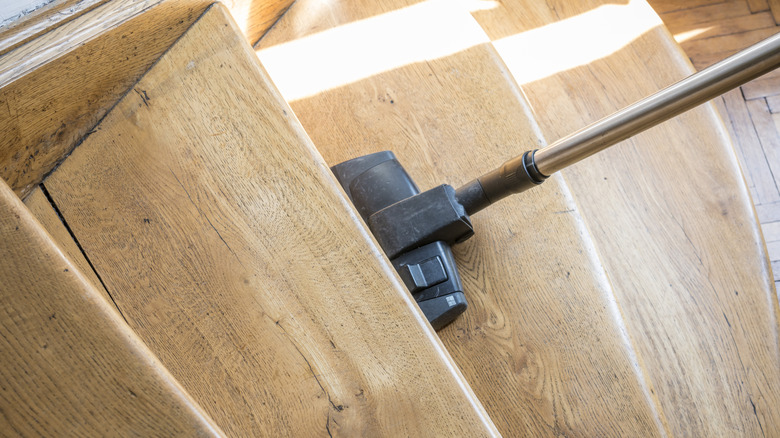The Trickiest Spots To Hit When Vacuuming (And How To Reach Them Every Time)
We may receive a commission on purchases made from links.
Vacuuming may at first seem like one of the easiest chores, but if you take a closer look at your hard-to-reach areas, they may have a different story to tell. Sure, vacuuming is pretty straightforward when you have an easy and open area to deal with, but unfortunately just because you may not be able to see it well doesn't mean that it's not collecting dust, dirt, and grime. Corners, along baseboards, under and around furniture, stairs, crown molding, and other little crevices can be difficult to reach if you're not paying attention, vacuuming the right way, or using the right kind of vacuum or attachments.
Unfortunately, many people out there were never taught how to properly clean those areas, and are left to figure it out on their own. If this is you, no worries. You'll be vacuuming like a pro in no time — and since you aren't paying a housecleaner, you can tip yourself with that well-deserved $7 latte. If you want to keep your floors looking spotless, you will have to keep up a consistent routine of sweeping, vacuuming, and mopping, but once you get in that pattern, it is much easier to maintain. Plus, if you have the right tools to do it, cleaning up might actually be enjoyable.
The tools you use will make or break your cleaning routine, so here are some suggestions
When it comes down to it, one of the biggest reasons people struggle with keeping certain areas clean is because they don't have the proper tools to do it with. When purchasing a vacuum — especially if you plan to have just one — you want get a model that has a hose with multiple attachment. You'll get bonus points if you can also turn it into a handheld vacuum. If you want power and versatility, your best option is a canister vacuum like the Eureka 3670M. But if you want the Rolls-Royce of canister vacuums, go for the Miele Classic C1. While they can be pricey upfront, they are known for their longevity and can take the place of having multiple vacuums.
That said, you also want your vacuum to have a high-suction level. After you choose a quality model, make sure that you are cleaning it frequently and properly so that it is able to function in peak form. This is imperative to lifting dust and dirt out of all those hard-to-reach cracks and crevices.
If possible, it can also be useful to have more than one vacuum — a heavy-duty plug-in model with multiple types of attachments for the big messes, and a smaller, more workable one for daily use. Having a stick vacuum (especially a cordless one) can be super helpful when it comes to cleaning up messes quickly and efficiently, and it can usually reach around and under furniture better than a standard vacuum without having to move everything.
Here's how to turn your sneakiest (dirty) spots to the squeakiest (clean) spots
Don't overlook the stairs. Even when vacuuming them, it can be difficult to get to the little crevices and corners. The best way to get into these areas — and other similar places in your home — is with a handheld vacuum (like this Black & Decker Dustbuster Advanced Clean option) or a hose attachment. To help prevent dust from settling in the corners, try T Tulead corner protectors for your steps, which also add decorative fun.
To keep your floors clean, always do this before you vacuum: start from the top and work your way to the bottom. Before going for the floors, start with ceiling corners, the top of the fridge, fans, light fixtures, and crown molding — these will be the most difficult. These areas are dust traps, and the height can make cleaning them a pain. To get them clean, first go over each one with a microfiber duster, then use a small handheld vacuum on the remaining dust. A brush head attachment can help loosen any stubborn areas that are giving you a hard time.
If you own a furry pet, you know the struggle of cleaning animal beds. Since they are usually soft and made of high-pile clingy material, they can be difficult to vacuum. But you can still do it. Use a brush or furniture attachment with a larger but less focused suction. To get the rest of the hair, use a lint brush. If it's really looking grimy, get off as much fur as you can and remove the lining to wash.


